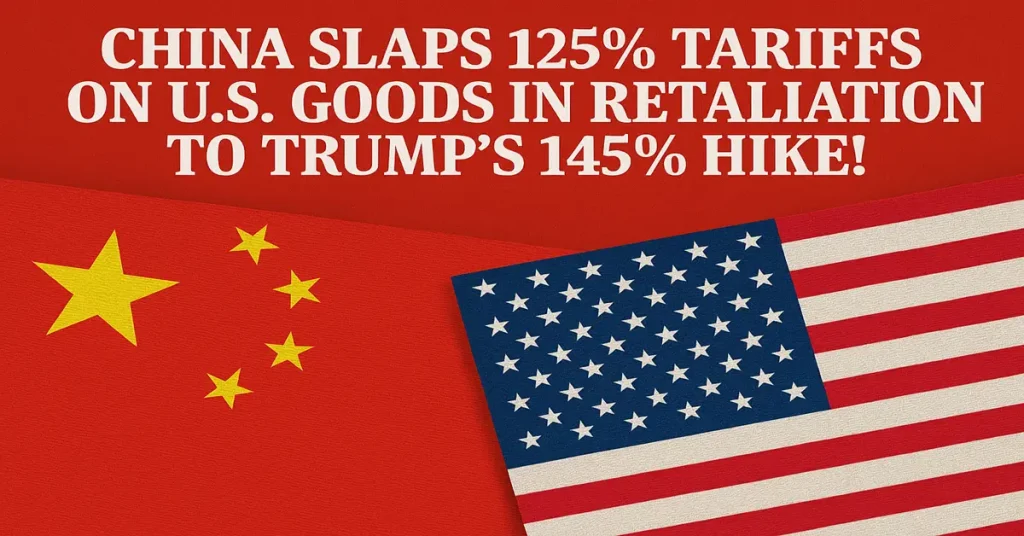In a dramatic escalation of the U.S.-China trade war, China has fired back with a staggering 125% tariff on American imports, effective April 12, 2025, in direct response to President Donald Trump’s recent imposition of a 145% tariff on Chinese goods.
This tit-for-tat move marks a critical juncture in the ongoing economic showdown between the world’s two largest economies, threatening to disrupt global supply chains and rattle markets worldwide.
China Slaps 125% Tariffs on U.S. Goods in Retaliation to Trump’s 145% Hike!
The latest salvo follows a turbulent week where Trump initially announced a 125% tariff on Chinese imports, only to clarify later that the total levy, including a 20% fentanyl-related border tax, amounts to 145%. China’s retaliatory hike, up from its previous 84% tariff rate, targets key U.S. exports like soybeans, aircraft parts, and pharmaceuticals, potentially driving up costs for Chinese consumers and businesses.
Beijing’s Finance Ministry called the U.S. tariffs “unilateral bullying,” warning that further escalations would render American goods “economically unviable” in China, a sentiment echoed by the Chinese Embassy in the U.S., which cautioned against the broader damage to global trade.
The trade war’s ripple effects are already evident. U.S. markets, despite closing higher last week, face growing uncertainty, with the yield on 30-year Treasury bonds spiking—a potential harbinger of economic strain.
Read More: Trump Aces Cognitive Test in Annual Physical: But Will Full Results Reveal More?
Meanwhile, Chinese officials, including President Xi Jinping, have urged the European Union to resist what they call “tariff bullying,” signaling a broader geopolitical alignment against U.S. trade policies. Xi’s comments, made during a meeting with Spanish Prime Minister Pedro Sanchez, underscore China’s intent to “fight to the end,” even as it suggests it may not raise tariffs further, deeming additional hikes pointless given the already prohibitive costs.
On the ground, industries are feeling the heat. Tesla, for instance, has reportedly paused orders for imported models in China, a sign of the immediate impact on American firms. Analysts warn that U.S. consumers could soon face higher prices for electronics, toys, and industrial equipment—key imports from China now burdened by the 145% U.S. tariff. The Tax Foundation estimates that these tariffs could translate to an average tax increase of nearly $1,300 per U.S. household in 2025, adding fuel to fears of inflation and a potential global recession.
While Trump has paused tariffs on dozens of other countries for 90 days, singling out China for heightened levies, Beijing’s response has deepened concerns about a prolonged economic standoff. Posts on X reflect a polarized sentiment, with some users predicting a “lose-lose” scenario that could shave 2.5% off China’s GDP while others see opportunities for other nations to fill the trade void. As both sides dig in, the world watches anxiously, bracing for the next move in this high-stakes economic chess game.

